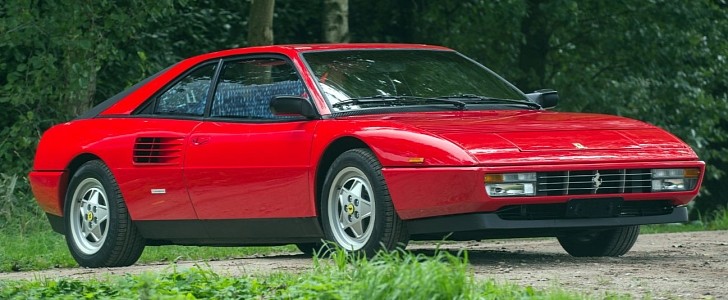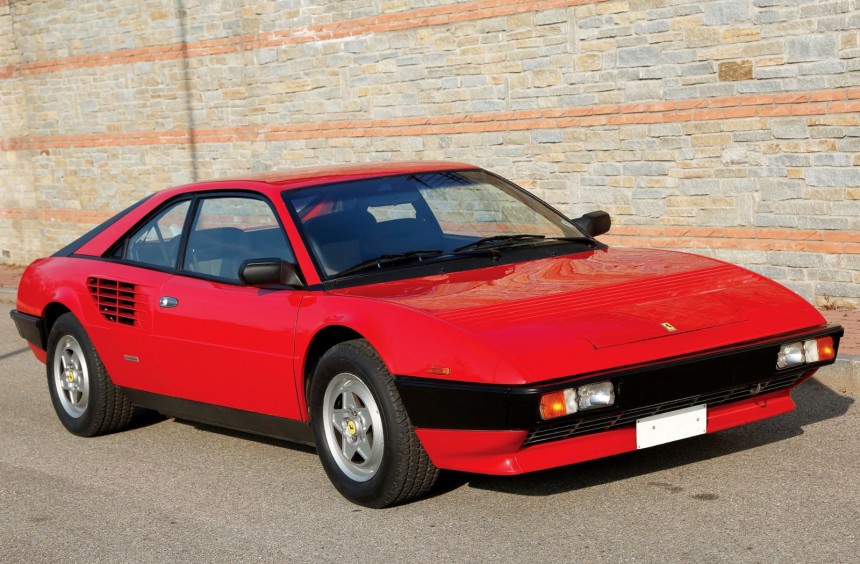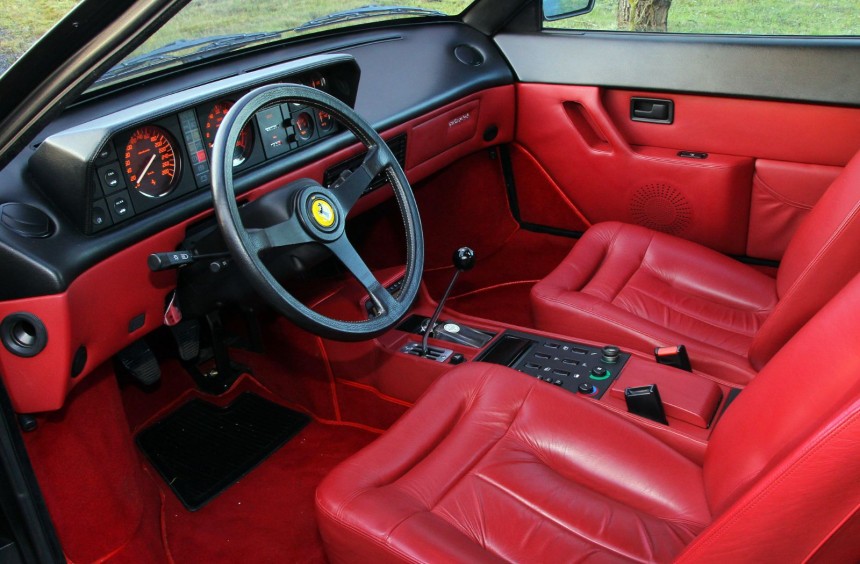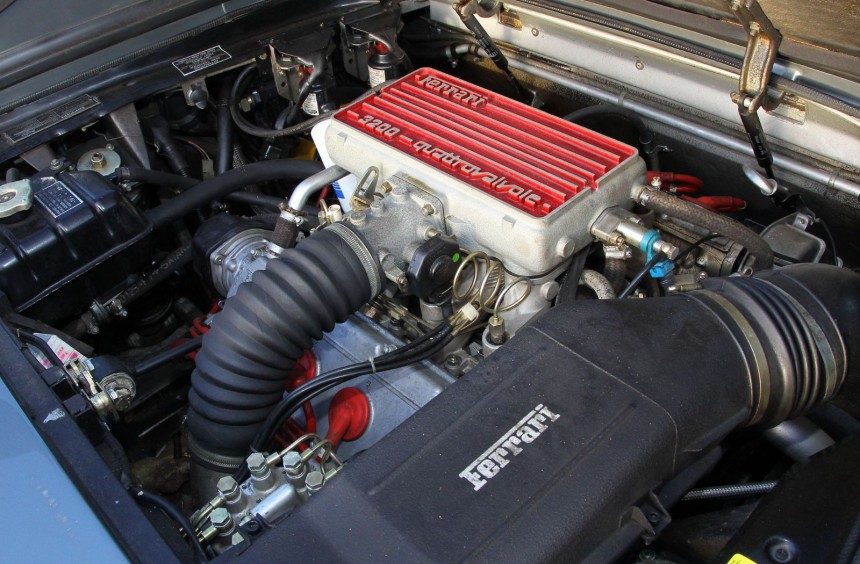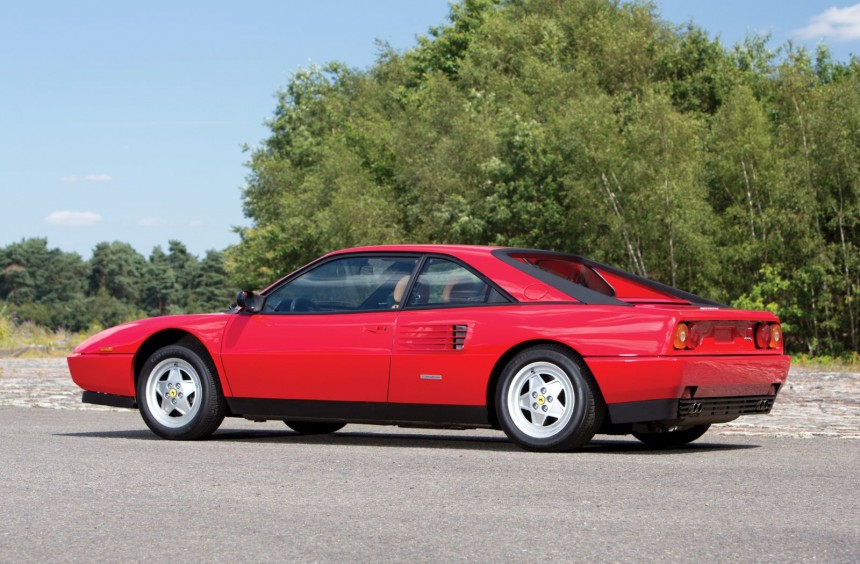If you can only afford a 2021 EcoBoost-powered Mustang but you dream about owning a classic Ferrari, then the Mondial deserves serious consideration. Although it’s affordable, it comes with a mid-mounted V8 and ticks all the boxes of a pure-bread prancing horse.
Sold by the iconic carmaker from 1980 to 1993, the 2+2 grand tourer available in coupe or convertible body styles was conceived as a replacement for the GT4 Dinos that debuted in 1973.
It’s definitely not as famous as contemporaries like the 288 GTO, Testarossa, or F40 and throughout the years it gained a bad reputation for being one of the most mundane Ferrari models of all time. However, like my colleague Ciprian pointed out in this article, this Ferrari wasn’t designed as a flagship and there are several reasons why it’s actually a great car, especially for its era.
Back when it was introduced in 1980, the automotive industry was adjusting to stricter emission regulations and recovering from a global oil crisis that severely impacted the global economy. For these reasons, the first iteration of the Mondial was largely unimpressive, yet it evolved through the years and became quite worthy of its iconic badges.
A little over four decades later, it’s the cheapest Ferrari you can buy, with examples in good shape starting around the $35,000 mark and climbing all the way up to $80,000 for a newer, low-mileage, mint-condition variant.
Nevertheless, as is the case with any used car, age, as well as wear and tear, can lead to some serious issues. So, let’s review what you should look for if you decide to buy one of these vintage Ferraris.
Over the years, owners of early 1980-1981 Mondial variants have reported many issues with corrosion, even with cars that were kept in a garage. While Ferrari seems to have done a better job at rust-proofing the panels on later versions, you should thoroughly inspect the wheel arches, rocker panels and window surrounds for any signs of rust, regardless of the model year.
All iterations of the Mondial come with an upscale leather-upholstered cabin. If it’s not well maintained, this material wears out and cracks over time, but any imperfections are clearly visible. Take your time and analyze the seats and all the interior panels because restoring such components can be quite expensive.
Another thing you should keep in mind is that the power windows operate very slowly. This is actually a design flaw that you should learn to live with and not an actual issue.
One last thing you should check inside the Mondial is the air conditioning system. Make sure it functions properly and ask the owner of the system was upgraded to work with the newer R134A refrigerant. If such a conversion has been made, it will be cheaper for you to refill the system as the aforementioned compound is easier to source.
Regardless of the model year, every Mondial is powered by a V8. However, there were four different versions used throughout the years. The first one is a 3.0-liter that only makes 214 hp, whereas the most powerful of the bunch is a 3.4-liter unit capable of delivering 300 hp.
In most cases, the engine is mated to a five-speed manual but a clutchless manual with the same number of speeds was also available on the 1989-1993 t models.
While these powertrains won’t reach the same levels of reliability as those built by Toyota, there isn’t anything inherently wrong with them either. The key here is maintenance so if the previous owner took care of the car and has the documents to prove it, you shouldn’t have to worry about encountering major issues.
Still, you should inspect everything as well as you can and watch out for misfires, oil leaks, smoke coming out of the tailpipes, or any signs that might point to an engine or transmission problem.
Another thing that you should keep in mind is that on models equipped with the five-speed manual, the second gear is harder to engage if the gearbox isn’t warmed up properly.
Although it's last on the list, this is the most important factor you should consider when buying one of these cars. Even if we’re talking about the most affordable of the carmaker’s classic models, owning and maintaining a Ferrari is not cheap. This is especially true if you want to have the oil or brake pads changed by an authorized dealership. Even swapping out timing belts could cost a fortune, particularly on the post-1989 Mondials that have a transversally mounted transmission that has to be removed to access the belts.
In my opinion, your safest bet is to go for a 1985–1988 model equipped with the 3.2-liter V8. With 270 hp on tap, it’s sufficiently capable and since it comes with a longitudinally-mounted transmission, it will cost less to service the engine.
It’s definitely not as famous as contemporaries like the 288 GTO, Testarossa, or F40 and throughout the years it gained a bad reputation for being one of the most mundane Ferrari models of all time. However, like my colleague Ciprian pointed out in this article, this Ferrari wasn’t designed as a flagship and there are several reasons why it’s actually a great car, especially for its era.
Back when it was introduced in 1980, the automotive industry was adjusting to stricter emission regulations and recovering from a global oil crisis that severely impacted the global economy. For these reasons, the first iteration of the Mondial was largely unimpressive, yet it evolved through the years and became quite worthy of its iconic badges.
Nevertheless, as is the case with any used car, age, as well as wear and tear, can lead to some serious issues. So, let’s review what you should look for if you decide to buy one of these vintage Ferraris.
Bodywork
While Italian sportscars are renowned for their design, the quality of their bodywork often leaves room for improvement with rust becoming a huge issue.Over the years, owners of early 1980-1981 Mondial variants have reported many issues with corrosion, even with cars that were kept in a garage. While Ferrari seems to have done a better job at rust-proofing the panels on later versions, you should thoroughly inspect the wheel arches, rocker panels and window surrounds for any signs of rust, regardless of the model year.
Interior
Another thing you should keep in mind is that the power windows operate very slowly. This is actually a design flaw that you should learn to live with and not an actual issue.
One last thing you should check inside the Mondial is the air conditioning system. Make sure it functions properly and ask the owner of the system was upgraded to work with the newer R134A refrigerant. If such a conversion has been made, it will be cheaper for you to refill the system as the aforementioned compound is easier to source.
Engine and Transmission
In most cases, the engine is mated to a five-speed manual but a clutchless manual with the same number of speeds was also available on the 1989-1993 t models.
While these powertrains won’t reach the same levels of reliability as those built by Toyota, there isn’t anything inherently wrong with them either. The key here is maintenance so if the previous owner took care of the car and has the documents to prove it, you shouldn’t have to worry about encountering major issues.
Still, you should inspect everything as well as you can and watch out for misfires, oil leaks, smoke coming out of the tailpipes, or any signs that might point to an engine or transmission problem.
Another thing that you should keep in mind is that on models equipped with the five-speed manual, the second gear is harder to engage if the gearbox isn’t warmed up properly.
Maintenance Cost
The Conclusion
Even if it’s not that cheap to maintain, buying a used Ferrari Mondial is totally worth it if you’re a fan of classic Italian sports cars, particularly those that feature prancing horses on their bodywork. Apart from the unique driving experience this car delivers, it could also prove to be an investment as its value continues to rise.In my opinion, your safest bet is to go for a 1985–1988 model equipped with the 3.2-liter V8. With 270 hp on tap, it’s sufficiently capable and since it comes with a longitudinally-mounted transmission, it will cost less to service the engine.
